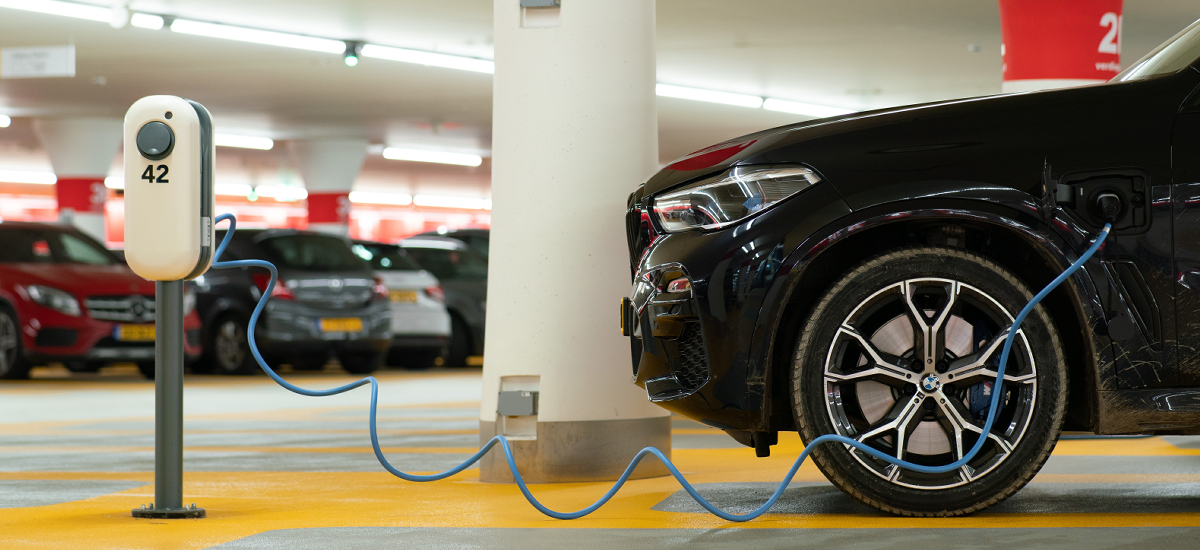
 Your Credit Estimate
Your Credit Estimate
 Your Credit
Your Credit
Your zip code helps us provide you with the most accurate vehicle pricing and vehicle availability.
We estimate your credit score to give you an idea of your monthly payments. To get an accurate payment amount, complete our credit application by clicking the Start Credit Application button below.
start credit application
The auto industry is changing. Just about every major automaker is shifting towards a more electrified lineup, but there’s one major problem – consumers don’t see battery-electric vehicles (BEVs) as a practical investment. Although there are many BEV charging stations available around the world, they’re not very convenient or easy-to-find without an app or in-vehicle service. City and highway infrastructure has not been designed to support BEV charging, and that makes consumers wary about where to charge up when driving a BEV or plug-in hybrid. To combat this, seven automakers have entered into a joint venture to develop a new, high-powered charging network for North America.
The major players are some of the world’s leading automakers – BMW Group, General Motors, Honda, Hyundai, Kia, Mercedes-Benz Group, and Stellantis NV. In an effort to make BEV charging more convenient, accessible, and reliable, the joint venture is set to launch 30,000 chargers around the continent to make zero-emission driving more attractive to the changing consumer audience. To ensure that any automaker can make use of these chargers, the new charging stations will be accessible to BEVs using Combined Charging Systems (CCS) or follow the North American Charging Standard (NACS). In addition, these new charging stations are expected to meet or exceed the requirements of the U.S. National Electric Vehicle Infrastructure (NEVI) program.
With operations expected to start in the summer of 2024 for the U.S., later in Canada, multiple high-powered DC chargers will be erected in metropolitan areas and along major highways. To offer a vehicle integrated, best-in-class charging experience, the network will be getting round the inconvenience of fining charging stations by constructing charging stations wherever amenities such as restrooms, food service, and retail operations are nearby or within the same complex. Think the rest stops along the interstate, and that’s where charging networks will start popping up. To make it even easier for consumers to find and use charging stations, the functions and services of the network will provide a seamless integration with participating automakers’ in-vehicle and in-app experiences, including making reservations, intelligent route planning and navigation, payment applications, transparent energy management, and more. Plug & Charge technology will also become a large part of the solution.
The cause for a new charging network is now larger than ever. By 2030, many automakers expect to have a large electrified lineup, with these new entries exceeding 50-percent of total U.S. sales. In total, about 30-42 million plug-in vehicles are expected to hit the rod by the end of the decade. As of July 2023, the U.S. Department of Energy states that there are only 32,000 publicly available DC fast chargers in the United States to meet the demands of 2.3 million electric vehicles. The ratio is definitely not in favor of BEVs and plug-in hybrids. The joint venture has plans to 30,000 chargers, but that’s just a small fraction of the 182,000 DC fast chargers needed, an estimate from the NREL (National Renewable Energy Laboratory).
As the auto market introduced more BEVs and the rate of consumer adoption increases, the demand for fast and reliable public charging becomes critical. That’s why this joint venture was created, to develop a best-in-class charging network that can ensure that the new BEV infrastructure will support current and projected BEV sales and consumer use. A side note – many automakers are aiming for a carbon net-zero philosophy to lessen the amount of CO2 emissions emitted during production and from vehicle powertrains. Thus, the new charging network will be powered solely by renewable energy. So, that’s a plus.
Want to stay up to date with all of this new car technology and BEVs? Follow along with us on NowCar social media.